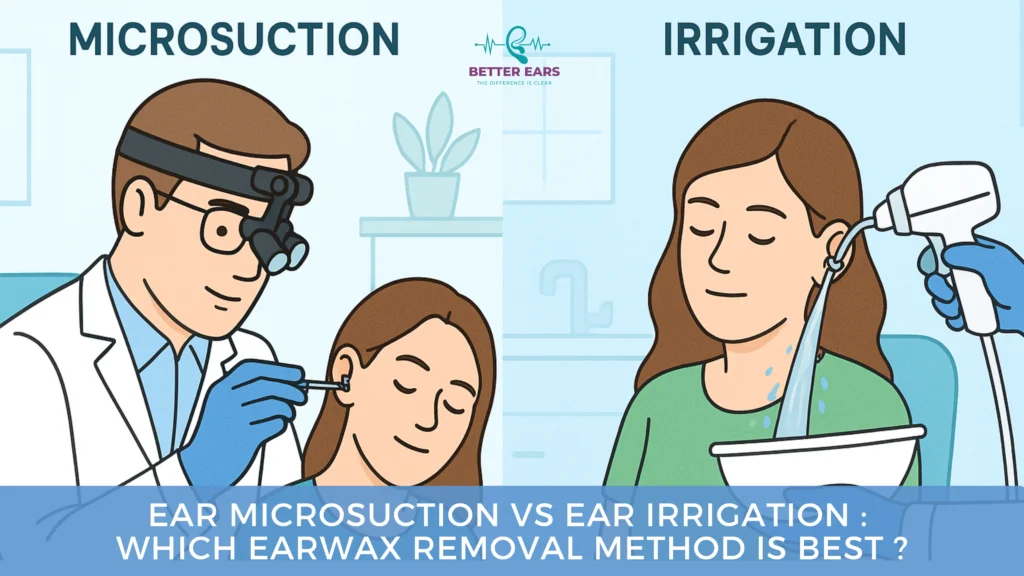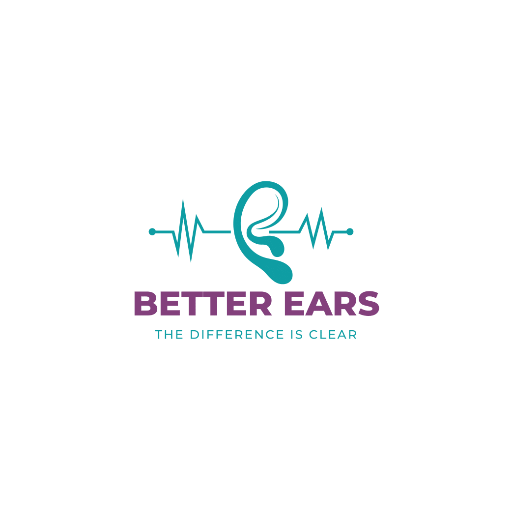
Earwax plays a vital role in protecting your ears, but when it builds up excessively, it can block hearing and cause discomfort. Many people wonder which professional method works best — ear microsuction vs ear irrigation.
In this guide, we’ll compare these two popular earwax removal methods, explain their differences, and help you decide which option is safer and more effective for you.
Understanding Earwax and Its Purpose
Why Earwax Exists
Earwax (cerumen) naturally protects the ear canal from dust, bacteria, and debris. It also prevents dryness and irritation.
When Earwax Becomes a Problem
Too much earwax can block the ear canal, leading to symptoms like:
- Muffled hearing
- Ear pressure
- Itching or discomfort
- Tinnitus (ringing)
- Dizziness
What Is Ear Microsuction?
How Microsuction Works
Microsuction uses a tiny vacuum device under a microscope or loupe to gently remove wax. The specialist uses precision instruments to extract wax without touching the eardrum.
Equipment and Precision
The process uses:
- A surgical microscope or endoscope for visibility
- Medical suction device for precision
- Sterile, disposable tips for safety
It’s quick, effective, and suitable for most patients, including those with sensitive ears.
What Is Ear Irrigation?
The Irrigation Procedure Explained
Ear irrigation involves using a controlled stream of warm water or saline to flush wax out of the ear canal. It’s performed with specialized tools that ensure steady pressure and temperature.
When Irrigation Is Suitable
This method works best for soft wax and people without a history of ear infections or perforated eardrums.
Key Differences Between Ear Microsuction vs Irrigation
| Feature | Microsuction | Irrigation |
|---|---|---|
| Method | Gentle suction under microscope | Warm water flush |
| Water Used | ❌ No | ✅ Yes |
| Ideal For | Hard or impacted wax | Soft wax |
| Duration | 10–20 minutes | 15–30 minutes |
| Safety | Very high | Moderate |
| Suitable For | All ages | Not for damaged ears |

Benefits of Ear Microsuction
No Water, No Mess
Microsuction is a dry procedure, reducing infection risk and making it ideal for people with previous ear conditions.
Immediate Hearing Improvement
Patients often notice instant relief and clarity after microsuction.
Safe for All Ages
It’s suitable for children, seniors, and individuals with narrow or sensitive ear canals.
Benefits of Ear Irrigation
Gentle and Effective for Soft Wax
When performed professionally, irrigation can effectively remove soft wax without discomfort.
Widely Available and Affordable
Ear irrigation services are commonly offered in clinics and are often lower in cost compared to microsuction.
Risks and Side Effects
Microsuction Risks (Minimal)
Microsuction is very safe. However, rare side effects may include:
- Mild sensitivity or tickling
- Temporary dizziness
- Light ringing (short-term)
Irrigation Risks (Infection, Discomfort)
Irrigation carries slightly more risk, especially if done incorrectly:
- Ear infections from retained moisture
- Perforated eardrum (rare)
- Temporary pain or dizziness
Cost Comparison: Ear Microsuction vs Irrigation
Typical Clinic Pricing
| Method | Average Cost (UK) | Duration |
|---|---|---|
| Microsuction | £40–£80 | 15–20 mins |
| Irrigation | £30–£60 | 20–30 mins |
Home vs Professional Treatments
DIY kits are cheaper but risky. Professional services ensure safety, hygiene, and full wax removal.

Which Method Is Best for You?
Factors to Consider
- Microsuction is best for impacted, dry, or hard wax.
- Irrigation suits soft wax buildup.
- Avoid irrigation if you’ve had ear surgery or eardrum perforation.
When to Seek Professional Advice
If you experience pain, hearing loss, or tinnitus, consult a licensed audiologist. They’ll assess your ear and recommend the safest method.
FAQs About Ear Microsuction vs Irrigation
Q1. Is microsuction painful?
No, it’s typically painless and well-tolerated.
Q2. Is irrigation safe for children?
It can be, but microsuction is generally safer for kids.
Q3. How often should I get my ears cleaned?
Every 6–12 months, depending on wax buildup.
Q4. Can I do irrigation at home?
Home syringing is not recommended—it can cause injury or infection.
Q5. Which method gives faster results?
Microsuction provides instant hearing improvement.
Conclusion: The Safer Choice for Ear Care
Both ear microsuction and ear irrigation effectively remove wax, but microsuction stands out as the safer, cleaner, and more precise method. It’s water-free, suitable for all ear types, and offers immediate results.
If you’re struggling with blocked ears or discomfort, book a professional earwax removal clinic appointment to get expert care and lasting relief.
Get your ear wax removal done by Better Ears – UK’s best ear wax expert
Connect Now & Book your appointment
